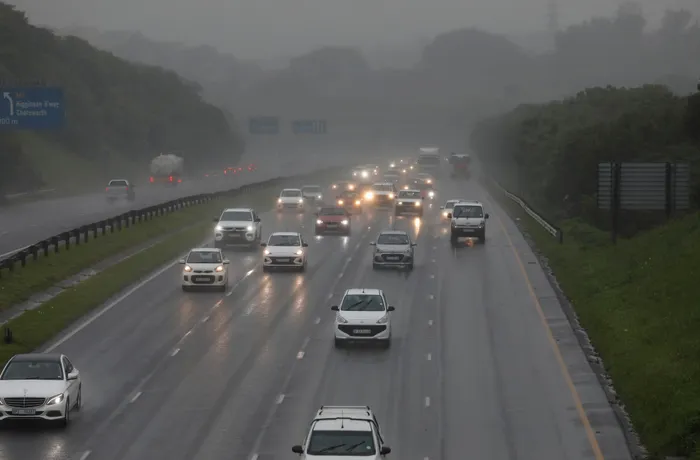As rains hit large parts of South Africa, here’s how to stay safe on the roads

Motorists should pay more attention to their driving and vehicle maintenance habits as wet weather sets in. File picture: Doctor Ngcobo / Independent Media.
The long-awaited summer rains have finally hit Gauteng, and as a large portion of South Africa moves into its rainy season, it’s important for motorists to take heed of the riskier road conditions associated with wet weather.
This is especially pertinent after rains that follow a dry spell as oil and residue on the road can make the surface particularly slippery. The risk of losing control is even greater for vehicles that aren’t well maintained.
There are four driving habits that will help to keep you safe on wet roads, says Vishal Premlall, National Director of the South African Tyre, Equipment, Parts Association (TEPA), an associate of the RMI.
“These actions are fundamental for safer driving in wet weather, yet there are additional steps to ensure your vehicle can handle the rain.”
Safety-critical components such as tyres, brakes, wipers, lights, shocks and suspension should also be inspected on a regular basis, and particularly before the wet weather arrives.
“Tyre tread depth is crucial. Adequate tread channels water away from the tyre, providing essential grip. Low tread can lead to aquaplaning, where tyres lose contact with the road surface, making steering and braking difficult,” Premall added.
Furthermore, tyres with uneven wear will have a negative effect on your car’s road holding, and this often goes unnoticed by car owners. Having your wheel alignment checked regularly can help to reduce uneven wear. Keeping your tyres inflated to the correct pressure will further ensure optimal handling.
Space-saver spare wheels also have an adverse effect on road holding, so driving carefully and slowly in the rain is advised if one is fitted. It should also be replaced with the proper wheel as soon as humanly possible.
“Don't take chances with your vehicle's condition. A simple check-up at an accredited fitment centre can be the difference between a safe journey and a risky one in these wet conditions,” Premlall said.
What do do when the road is flooded
Motorists should first try to estimate the depth of water before driving through, MasterDrive advises.
- Avoid driving through water which comes to the middle of your tyre. Even if you avoid being swept away you risk serious damage to your car. Most drivers risk driving through a pool of water but roads which collect water are more vulnerable to collapse and it is easy to underestimate their depth
- Drive in the middle of a road where the water is at its lowest
- Pass one car at a time, and do not drive through water against oncoming vehicles
- Never drive through fast flowing water. It only takes 15cm to touch the bottoms of most cars and consequently cause loss of control or stalling. Your car tyres will lift off the tar at 30cm of water where you can lose control or get washed away. Even 4x4s can be washed away in 60cm of water
- If too late to avoid, drive slowly and steadily through while in first or second gear or the lowest gear in automatic vehicles. Once you are through the water, lightly touch your brake a few times to dry them off.
- If your car stalls and you are not in danger of being swept away do not restart the car. Rather get a mechanic to check no water has made its way into the engine
When caught in an unexpected flash flood
- If suddenly you start losing grip it might be because the car is starting to float.
- Open the door to let some of the water in which will weigh the car down and allow the tyres to grip the road again.
- If you are in danger of being swept away abandon the vehicle if you have an opportunity to do so safely.
- If you are swept away by water when you exit the car, lift your toes and point them downstream and manoeuvre yourself around obstacles.
IOL
Related Topics: